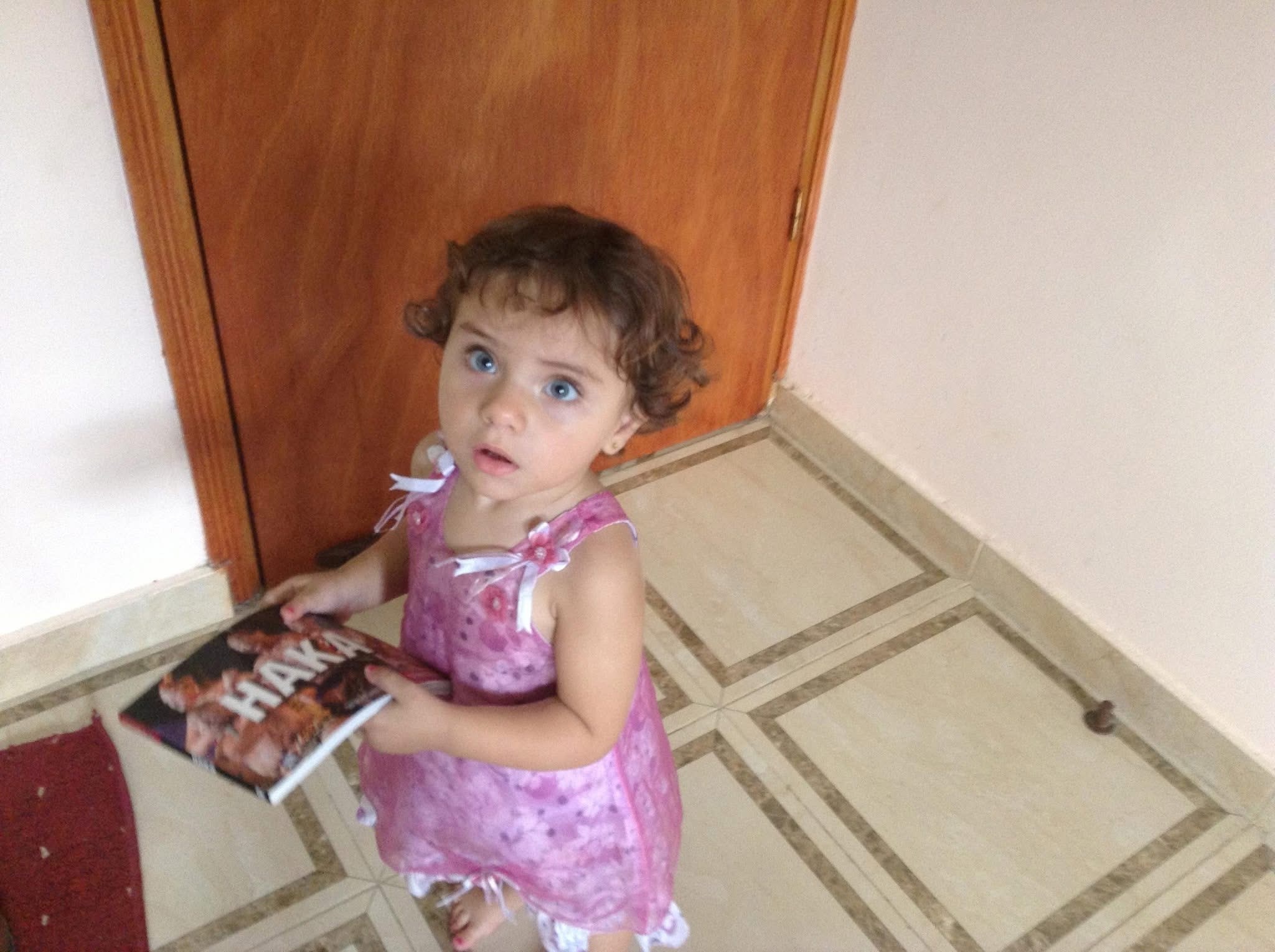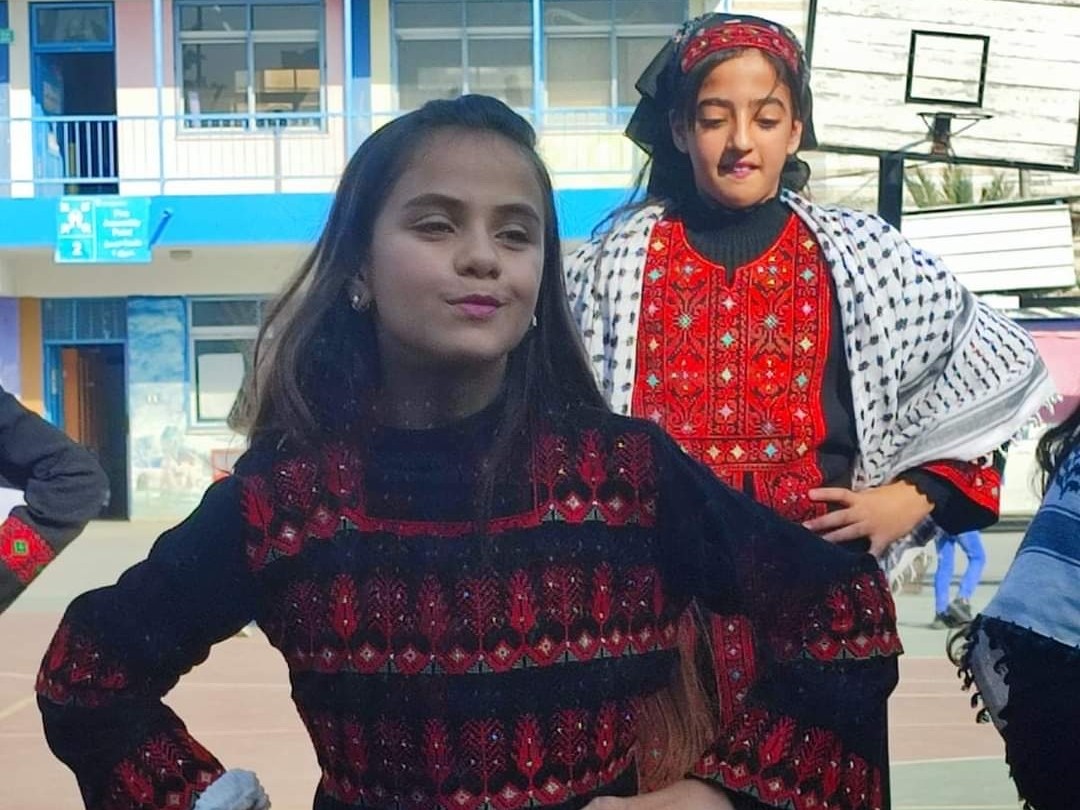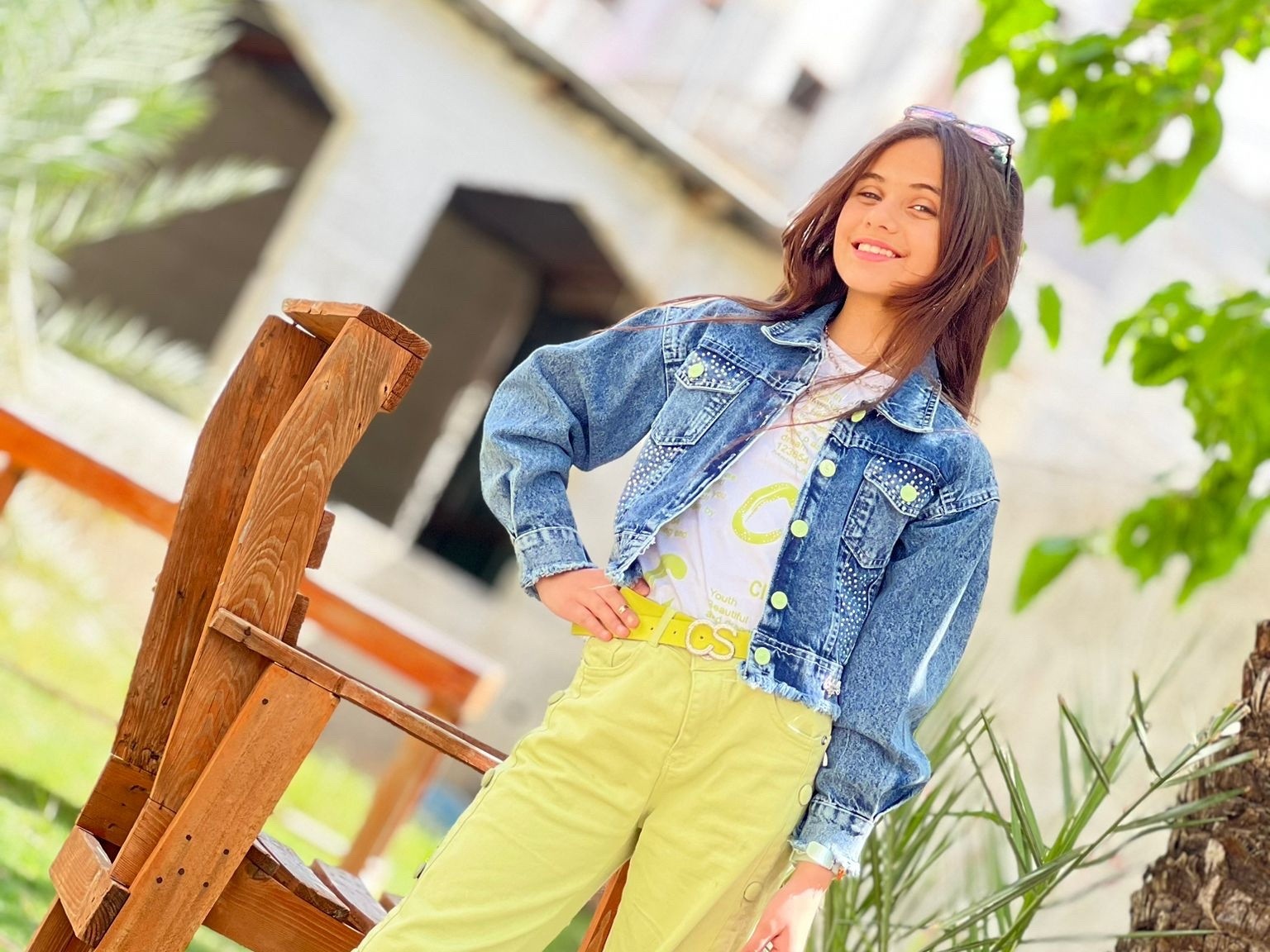
The author's niece, Hoor, holds a book on the traditional Māori haka dance that he brought back from a visit to New Zealand. Hoor, her parents, and one of her sisters were killed in an Israel airstrike on their home in August 2025.
On August 7, at around 3:00 a.m., an Israeli airstrike hit the apartment where my sister Somaiya, 35, her husband Anas, 35, and their daughters Noor, 14, Hoor, 13, and Sham, 9, were staying. The airstrike killed my sister’s family except for Noor, who survived with an arm fracture that required surgery. When Noor was admitted to the hospital on August 8 and rushed to the operating room, she called out to her parents, who were gone forever.
Although Noor knew they had been killed in the airstrike, she could not help but call out to them, like a child needing her parents by her side during surgery. Noor is now the only survivor of her family, recalling memories with her parents and siblings, all of whom were killed by Israel. I had read about the term "wounded child, no surviving family" (WCNSF), which was introduced in Gaza, but I never thought that my own family would experience it. No words can describe the pain of being the sole surviving family member, and Noor expresses her wish to join her family soon.
Noor told me that a fight between children the night before saved her life. She usually sleeps next to her sister, Hoor. They were very close growing up. They played together, went to school together, and went to their favorite ice cream shop together their whole lives. On the night of the airstrike, however, the sisters had a small argument, and Noor decided to sleep closer to the curtain in the room where their family slept. While the family slept, an Israeli missile targeted their room, killing everyone except Noor, who had been sleeping a few meters away from her parents' bed. Noor’s body flew through the air with her mattress and hit the bathroom wall. She survived with multiple fractures in her arm.
I remember my sister Somaiya for her cheerful personality and her love of writing prose. She studied journalism but didn’t practice it. During the Gaza genocide, she gathered kids from our neighborhood and taught them language and math.
Once, she sent me a photo of herself teaching these children. She had written the word "HOPE" on the whiteboard in capital letters. She hoped that the genocide would end and that her family would survive. In our last message exchange, she wrote, "We are still in this world, hoping to get some good news." Instead, on August 6, I woke up to the tragic news of her murder and that of her entire family.

A school photo of Hoor and her classmate.
Somaiya was known for being mischievous and adventurous when she was young. Once, she opened the door of a moving car and tried to exit. Another time, she climbed the olive tree at my grandparents' house. She later passed on her love of adventure to her three daughters. She made sure they looked tidy and stylish, buying them matching outfits and taking them to amusement parks.
When I returned to Gaza in 2013 from New Zealand, I brought back a book on the traditional Māori haka dance. Last July, I attended a performance in Rotorua, where the chief of the Whakarewarewa Māori village welcomed me. I wish I had told him about Hoor holding and exploring the haka book. Instead, a month later, my sister’s family was buried in shrouds; their bodies were disfigured and torn to pieces.
Anas was buried in my aunt’s grave because there were no available graves in Gaza. Hoor was buried with him. Sham and Somaiya were buried in my sister Zainab's grave. Zainab lost her life due to Israel's siege in 2007. I hope putting their bodies in graves with their loved ones gives them some solace and peace, which they were denied while alive. I wish their lives hadn’t been cut short by a missile. I wish Hoor and Noor could have had more fights over toys and ice cream. I wish they could ask their father to drive faster so their hair would fly in the wind.

A recent photo of Hoor.
The world allowed this genocide to happen. My family would have preferred to celebrate the lives of their loved ones rather than just their memories. We don't want streets or institutions named after our children. We wanted Hoor and Sham to grow up and become the young women they wanted to be. We wanted to see freedom and justice in our lifetime. After nine years of separation, I wanted to see my family. I wanted to treat my nieces to ice cream and share the adventures I had with my sister as a child.
Instead, the world's silence and complicity gave my family only shrouds and no graves of their own. I wish to visit their graves one day when Gaza is free—if Israel does not bulldoze them the way they bulldozed most of Gaza’s graveyards. I want you to remember my family: their names, stories, and hopes.
This is the least the world can do to keep their memories alive after failing to make their dreams come true.
While reality in Gaza is horrifying, I imagine Somaiya, Hoor, Sham, and Anas living better lives in a different world that treats Palestinians fairly. They take more car rides and enjoy more ice cream treats. Somaiya teaches kids about hope in a world that Palestinians in Gaza were deprived of because they were born in the wrong place. In that world, Hoor could watch a haka performance, free from the sounds of warplanes that terrified Gaza's children for 22 months.
As Somaiya wrote to her students in Gaza, “hope” is what keeps us alive. In that other world, Noor's wish is to live and not die so she can see her family.